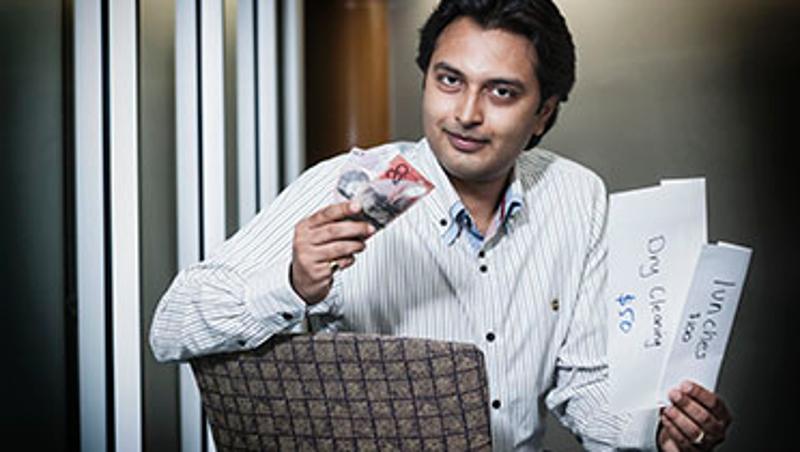
Middle-income earners are just as thrifty as those less well-off when it comes to budgeting the family finances, QUT research has found.
Researchers from QUT's Science and Engineering Faculty investigated the budgeting techniques of families whose average household incomes were more than $100,000 - the upper middle range of income in Australia.
They uncovered a "strong tendency" to live frugally, aided by a series of "creative" ways to pinch more pennies.
"With the average credit card debt in Australia $3,700, the management of money on a personal level is clearly a social problem," Dr Dhaval Vyas, from QUT's Electrical Engineering and Computer Science School, said.
"We found families were concerned about their spending and employed various and creative mechanisms to minimise expenses and save money, despite their affluent position compared to the rest of the population.
"A common technique the families used was 'hiding money' from themselves. Sometimes this was literal, for example putting cash in a hidden section of a wallet or in a locked drawer.
"Another example was a participant who was saving up for a holiday to Bali with her partner. To ensure the couple didn't spend the money before the trip, she changed Australian cash into Indonesian rupiah months in advance so they couldn't spend it before leaving."
Dr Vyas, who has co-authored several recent papers with QUT colleague Steve Snow on budgeting practices, said families budgeted to meet short and long-term goals focusing on smaller expenses they could control rather than larger, regular bills like electricity or water.
"Our research found people with bigger budgets still place a high value on thriftiness. The difference is that austerity employed by low income earners is motivated by a desire to make ends meet, whereas for our participants it was motivated by a desire for future economic security or to meet a specific goal," he said.
Dr Vyas found traditional methods were preferred to technology as a means to manage money.
"The families we spoke to were happy to use technology for day-to-day financial transactions or monitoring of finances, for example internet banking, but not for budgeting," he said.
"There are numerous budgeting apps available but the families found them too time-consuming or confusing and instead turned to technology-free options like dividing the week's spending into envelopes for things like coffee, petrol, and lunches."
Dr Vyas said the research would help developers design more effective apps that were better aligned with family budgeting strategies.
"The design of budgeting apps needs to be receptive to the creativity employed by households in being thrifty with their money," he said.
"There is potential for apps to foster, encourage and support the types of creative financial management strategies we observed organically.
"Rather than simply recording and presenting data, we envisage a future for financial management apps as more informative, interactive and imaginative co-creators of a wider range of family-appropriate saving and budgeting strategies."
Media contact:
Rob Kidd, QUT Media, 07 3138 1841, rj.kidd@qut.edu.au
After hours, Rose Trapnell, 0407 585 901




